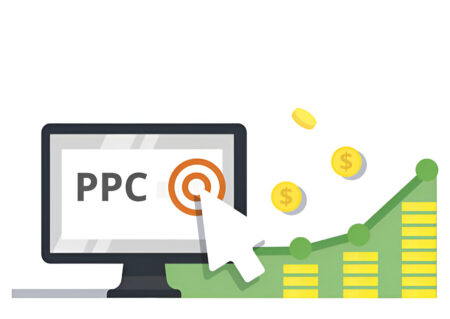In the digital age, tracking user behavior is essential for businesses to optimize their strategies and improve ROI. However, with increasing privacy regulations and browser restrictions, traditional tracking methods are becoming less effective.
Enter server-side tracking—a modern solution that offers greater accuracy, privacy, and reliability. In this article, we’ll explore what server-side tracking is, how it compares to web-based tracking, and why it’s becoming the go-to choice for businesses worldwide.
1. Introduction and Basics
What is Server Side Tracking?
Server-side tracking is a method of collecting user data directly from your server instead of relying on the user’s browser.
When a user interacts with your website or app, the data is sent to your server first, which then forwards it to your analytics or marketing tools.
This approach bypasses many of the limitations of traditional tracking methods, such as browser restrictions and ad blockers.
How Does Server-Side Tracking Work?
Imagine you’re sending a letter. With server-side tracking, the letter (data) goes directly from the post office (your server) to the recipient (your analytics tool).
There are no intermediaries (like the user’s browser) that could delay or block the delivery.
For a deeper dive, check out this guide on Server-Side Tracking by Google.
What is Web Based Tracking?
Web-based tracking, also known as client-side tracking, relies on the user’s browser to collect and send data to analytics tools.
This method typically uses cookies to track user behavior, such as page views, clicks, and conversions.
While web-based tracking has been the standard for years, it’s increasingly affected by privacy regulations and browser restrictions.
How Does Web-Based Tracking Work?
Using the same letter analogy, web-based tracking sends the letter (data) through the user’s browser.
However, this process can be interrupted by ad blockers, cookie restrictions, or slow internet connections, leading to incomplete or inaccurate data.
Learn more about web-based tracking from Mozilla’s Web Tracking Documentation.
Difference Between Server Side Tracking and Web Based Tracking
To better understand these two methods, let’s compare them side by side:
| Aspect | Server-Side Tracking | Web-Based Tracking |
|---|---|---|
| Data Collection | Directly from the server. | Through the user’s browser. |
| Privacy | More secure and compliant with GDPR/CCPA. | Less secure due to reliance on cookies. |
| Accuracy | Higher accuracy, unaffected by ad blockers. | Lower accuracy, often blocked by ad blockers. |
| Speed | Faster data processing. | Slower due to browser dependencies. |
| Implementation | Requires technical setup. | Easier to implement. |

2. Benefits and Use Cases
Benefits of Server Side Tracking
Server-side tracking offers several advantages over traditional methods:
Improved Data Accuracy:
Since data is sent directly from the server, it’s less likely to be affected by browser restrictions or ad blockers.Enhanced Privacy and Compliance:
Server-side tracking reduces reliance on cookies, making it more compliant with privacy laws like GDPR and CCPA.Better Performance:
By bypassing the browser, server-side tracking ensures faster data processing and delivery.Future-Proofing:
As browsers like Safari and Chrome continue to restrict third-party cookies, server-side tracking provides a more sustainable solution.
Why Server Side is Better Than Client-Side?
While client-side tracking has its uses, server-side tracking is often the better choice for businesses. Here’s why:
Ad Blocker Resistance:
Server-side tracking is immune to ad blockers, ensuring you don’t miss out on valuable data.Cross-Device Tracking:
It provides a more accurate picture of user behavior across multiple devices.Data Security:
By keeping data on your server, you reduce the risk of data breaches or leaks.
Top 5 Examples of Server Side Tracking
Here are some real-world examples of how businesses use server-side tracking:
E-commerce Platforms:
Tracking purchases and user behavior to optimize product recommendations.SaaS Companies:
Monitoring user engagement and feature usage to improve retention.Media Companies:
Measuring ad performance and audience engagement.Mobile Apps:
Tracking in-app behavior and conversions.Financial Services:
Ensuring secure and accurate tracking of transactions.
3. Platform-Specific Tracking
Facebook Server Side Tracking
Facebook’s server-side tracking, powered by the Conversions API, allows businesses to send data directly from their servers to Facebook. This method improves data accuracy and helps advertisers optimize their campaigns.
Benefits of Facebook Server-Side Tracking:
Better ad targeting and ROI.
Reduced data loss due to browser restrictions.
Enhanced privacy and compliance.
Learn more about Facebook’s Conversions API here.
Google Ads Server Side Tracking
Google Ads also supports server-side tracking through the Google Tag Manager Server Container. This allows businesses to send conversion data directly to Google Ads, improving campaign performance.
Benefits of Google Ads Server-Side Tracking:
More accurate conversion tracking.
Better attribution modeling.
Enhanced data security.
Check out Google’s guide on Server-Side Tagging.
4. Technical Implementation
Server Side Tracking Steps
Implementing server-side tracking involves the following steps:
Set Up a Server Endpoint:
Create a dedicated server to collect and process data.Configure Tracking Tools:
Use tools like Google Tag Manager or Segment to manage your tracking setup.Test and Validate:
Ensure data is being sent and received accurately.
Method of Server Side Tracking
Server-side tracking works by sending data directly from your server to analytics tools. This method ensures higher accuracy and privacy compared to client-side tracking.
Method of Web Based Tracking
Web-based tracking relies on the user’s browser to collect and send data. While easier to implement, it’s more prone to inaccuracies due to browser restrictions.
Server Side Tracking Tools
Here are some popular tools for server-side tracking:
Google Tag Manager (Server Container):
A free tool for managing server-side tracking.Segment:
A customer data platform that supports server-side tracking.Tealium:
A tag management system with robust server-side capabilities.
Learn more about these tools on their official websites: Google Tag Manager, Segment, Tealium.

5. Advanced Concepts
Server Side Tracking VS Cookies
Server-side tracking reduces reliance on cookies, making it more privacy-friendly and compliant with regulations like GDPR and CCPA.
What is Server Side Tagging?
Server-side tagging is an extension of server-side tracking. It allows you to manage and deploy tracking tags (e.g., Facebook Pixel, Google Analytics) from your server instead of the client-side. This approach improves performance and reduces reliance on cookies.
Method of Server Side Tagging
To implement server-side tagging:
Set Up a Tagging Server:
Use tools like Google Tag Manager’s server container.Deploy Tags:
Configure and deploy tags from your server.Monitor and Optimize:
Continuously test and refine your tagging setup.
Server Side Tracking and Data Privacy
Server-side tracking is more privacy-friendly than traditional methods. By reducing reliance on cookies and keeping data on your server, it ensures compliance with regulations like GDPR and CCPA.
Server Side Tracking and Attribution Modeling
Server-side tracking improves attribution accuracy by providing a complete picture of user interactions across devices and channels.
Server Side Tracking and Cross-Device Tracking
Server-side tracking enables seamless tracking of user behavior across multiple devices, providing a more accurate understanding of customer journeys.
Server Side Tracking and Real-Time Analytics
Server-side tracking allows for real-time data processing, enabling businesses to make faster, data-driven decisions.
6. Industry-Specific Applications
Server Side Tracking for E-commerce
E-commerce platforms use server-side tracking to monitor purchases, optimize product recommendations, and improve customer experiences.
Server Side Tracking for SaaS Companies
SaaS companies leverage server-side tracking to track user engagement, feature usage, and retention metrics.
Server Side Tracking and Mobile Apps
Mobile apps use server-side tracking to monitor in-app behavior, conversions, and user engagement.
7. Future Trends and Innovations
Future of Server Side Tracking
As privacy regulations tighten and browsers phase out third-party cookies, server-side tracking will become even more important. Businesses that adopt this method now will be better positioned for the future.
Server Side Tracking and Machine Learning
Server-side tracking data can be used to train machine learning models, enabling predictive analytics and personalized marketing.
Server Side Tracking and Customer Data Platforms (CDPs)
CDPsintegrate with server-side tracking to centralize customer data, providing a unified view of customer interactions.

8. Data Management and Security
Server Side Tracking and Data Warehousing
Server-side tracking integrates with data warehouses like Snowflake and BigQuery, enabling advanced analytics and reporting.
Server Side Tracking and Data Governance
Effective data governance ensures that server-side tracking data is accurate, consistent, and compliant with regulations.
Server Side Tracking and Data Security
Server-side tracking enhances data security by keeping sensitive information on your server, reducing the risk of breaches.
9. Integration and APIs
Server Side Tracking and API Integrations
APIs play a crucial role in server-side tracking, enabling seamless data transfer between your server and analytics tools.
Conclusion
Server-side tracking is a powerful solution for businesses looking to improve data accuracy, enhance privacy, and future-proof their tracking strategies. By understanding the differences between server-side and web-based tracking, you can make informed decisions that benefit your business in the long run. Whether you’re an e-commerce store, a SaaS company, or a media platform, server-side tracking offers the tools you need to succeed in today’s digital landscape.
FAQs
What is the purpose of server-side tracking?
Server-side tracking is used to collect user data directly from your server, ensuring higher accuracy, better privacy compliance, and reduced reliance on browser-based tracking methods like cookies.
Is server-side tracking more secure than client-side tracking?
Yes, server-side tracking is more secure because it keeps data on your server, reducing the risk of data breaches or leaks compared to client-side tracking, which relies on the user’s browser.
How does server-side tracking work with GDPR and CCPA?
Server-side tracking reduces reliance on cookies, making it easier to comply with privacy regulations like GDPR and CCPA. It also allows businesses to maintain better control over user data.
Can server-side tracking work with ad blockers?
Yes, server-side tracking is immune to ad blockers because it bypasses the browser and sends data directly from your server to analytics tools.
What tools are used for server-side tracking?
Popular tools for server-side tracking include Google Tag Manager (Server Container), Segment, and Tealium. These tools help manage and deploy tracking tags from your server.
How does server-side tracking improve attribution modeling?
Server-side tracking provides a more complete picture of user interactions across devices and channels, improving the accuracy of attribution models.
What is the difference between server-side tracking and server-side tagging?
Server-side tracking refers to the method of collecting data directly from your server, while server-side tagging is the process of managing and deploying tracking tags (e.g., Facebook Pixel) from your server.
Can server-side tracking be used for mobile apps?
Yes, server-side tracking is highly effective for mobile apps, as it allows for accurate tracking of in-app behavior and conversions without relying on browser cookies.
What are the benefits of server-side tracking for e-commerce?
E-commerce businesses benefit from server-side tracking through improved data accuracy, better customer insights, and enhanced privacy compliance, which helps optimize product recommendations and marketing campaigns.
How does server-side tracking integrate with data warehouses?
Server-side tracking can send data directly to data warehouses like Snowflake or Google BigQuery, enabling advanced analytics and reporting.
Server-side tracking is used to collect user data directly from your server, ensuring higher accuracy, better privacy compliance, and reduced reliance on browser-based tracking methods like cookies.
Yes, server-side tracking is more secure because it keeps data on your server, reducing the risk of data breaches or leaks compared to client-side tracking, which relies on the user’s browser.
Server-side tracking reduces reliance on cookies, making it easier to comply with privacy regulations like GDPR and CCPA. It also allows businesses to maintain better control over user data.
Yes, server-side tracking is immune to ad blockers because it bypasses the browser and sends data directly from your server to analytics tools.
Popular tools for server-side tracking include Google Tag Manager (Server Container), Segment, and Tealium. These tools help manage and deploy tracking tags from your server.
Server-side tracking provides a more complete picture of user interactions across devices and channels, improving the accuracy of attribution models.
Server-side tracking refers to the method of collecting data directly from your server, while server-side tagging is the process of managing and deploying tracking tags (e.g., Facebook Pixel) from your server.
Yes, server-side tracking is highly effective for mobile apps, as it allows for accurate tracking of in-app behavior and conversions without relying on browser cookies.
E-commerce businesses benefit from server-side tracking through improved data accuracy, better customer insights, and enhanced privacy compliance, which helps optimize product recommendations and marketing campaigns.
Server-side tracking can send data directly to data warehouses like Snowflake or Google BigQuery, enabling advanced analytics and reporting.








